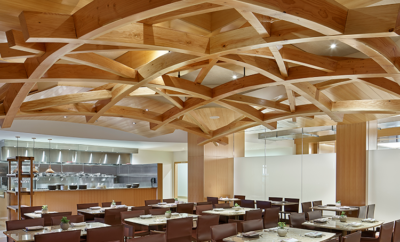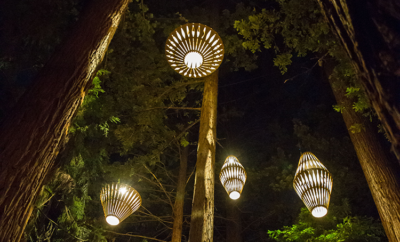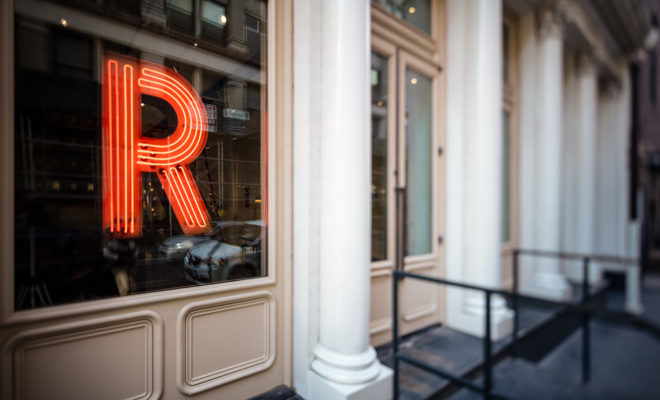 ALL IMAGES COURTESY OF R & COMPANY
ALL IMAGES COURTESY OF R & COMPANY
Design
R & Company at 20
TO MARK ITS TWENTIETH YEAR IN business, in June the New York design gallery R & Company opened an expansive new 8,000-square-foot space one block from its long-standing Tribeca base. The second venue offers not only a significant increase in exhibition space but also provides the gallery the opportunity to grow its cultural footprint. Though a commercial platform, R & Company has established itself as a respected scholarly voice through curatorial programming, publications, and film projects. The inaugural exhibition in the new venue, titled 20 Years of Discovery, demonstrates the gallery’s commitment to both overlooked twentieth-century design and contemporary innovation. R & Company cofounder Evan Snyderman spoke to Modern about the gallery and its endeavors.
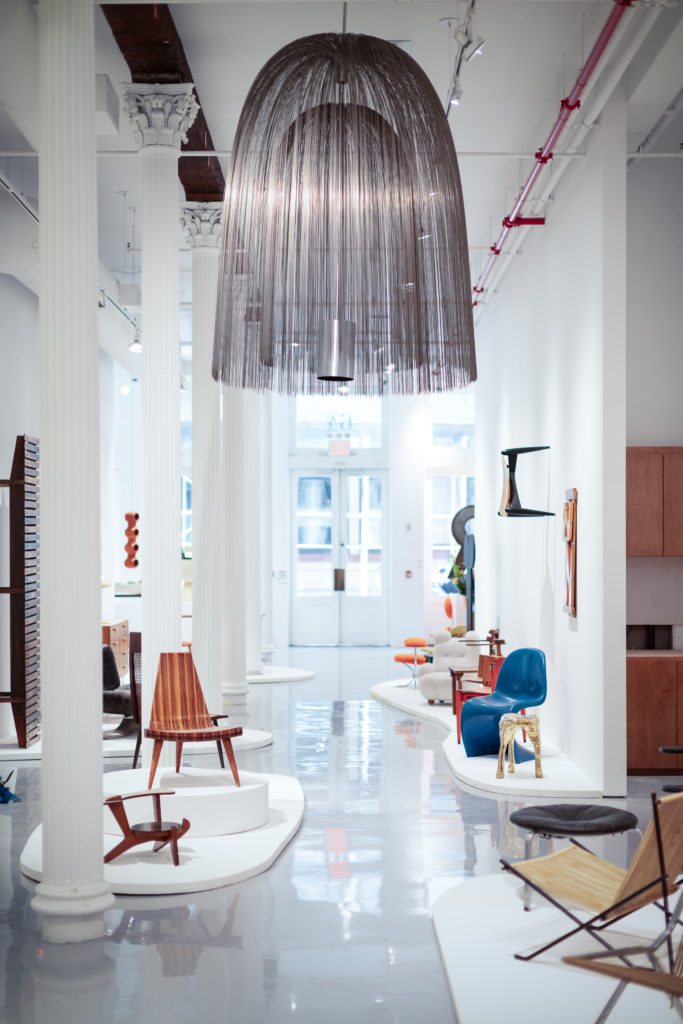
An installation shot of the new gallery featuring Harry Bertoia’sDouble Hanging Willow, 1968.
Adrian Madlener/MODERN MAGAZINE: What is the through line of the 20 Years of Discovery exhibition?
Evan Snyderman: It’s a look back at the history of the gallery and the different movements we’ve focused on, are passionate about, and have built commercial interest in for the last two decades. The exhibition is divided into four categories, starting with work by unsung heroes of mid-century Californian design, such as Greta Magnusson Grossman; the next section is dedicated to Brazilian modernism, encompassing work by Joaquim Tenreiro and others. “Difficult Design” is a category we’ve coined to cover talents who, in the 1960s and ˇ70s, began to question the conventions of design—Verner Panton and figures from various Italian radical design collectives. A perfect segue is our contemporary design program, which includes designers, like Katie Stout, who continue to challenge the marketplace with their maverick approach to making. We wanted people to know what contributions we’ve made to the collectible design marketplace but also to design history.
AM: How has the collectible design market evolved in the past two decades?
ES: It used to be that collectors sought out only the Eameses or Jean Prouvé. Knowledge of design history was limited. With the emergence of a new crop of craft-led talents in the last twenty years, broader awareness developed and our audience grew. Big art and antique collectors are now beginning to understand that important works can be a part of their collections, as opposed to just being decoration or pieces of furniture they sit on.
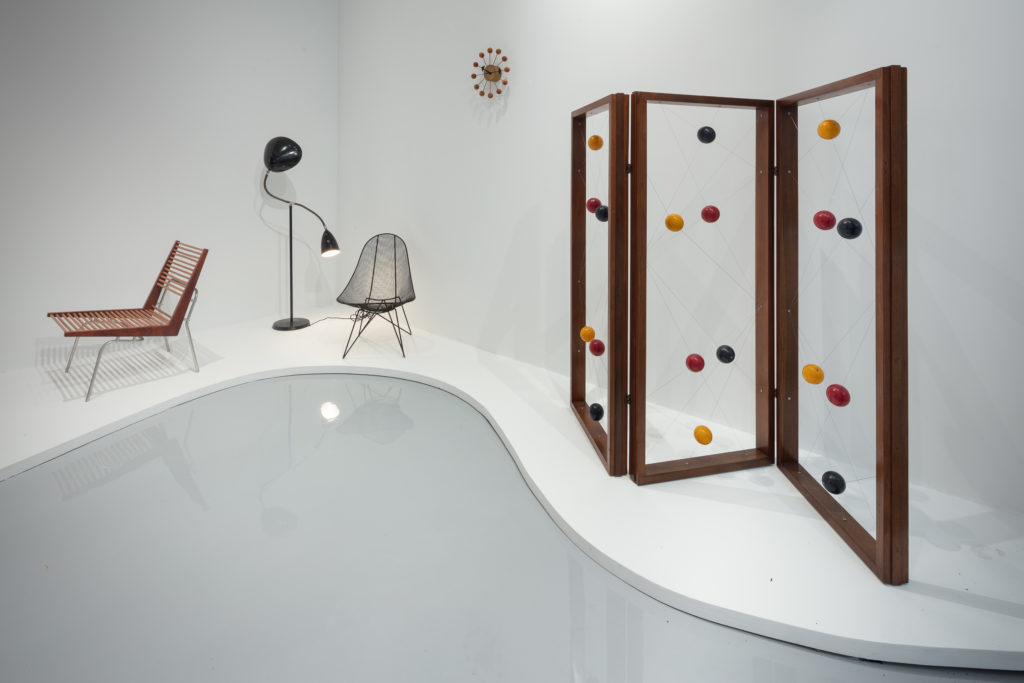
Greta Magnusson Grossman’s rare three-panel folding screen, 1952, and floor lamp, c. 1950, are in good company with lounge chairs by Maurice Martine, 1948, at left, and Sol Bloom, 1950, and a George Nelson Ball clock, c. 1949.
AM: How has R & Company formed a niche in this context?
ES: For us, it’s about working with historical icons and contemporary designers who have created work that tells stories. Our role is to communicate these narratives to our clients. It all starts with an object as a way into a designer’s world. It’s a piece of their career a collector can own.
AM: Why did you decide to open another space nearby rather than expand to a location outside New York?
ES: The idea of expanding into other cities was suggested to us many times. What we realized when dreaming of a new space was that we could establish a second location here in Tribeca, and collaborate with other galleries around the world to grow our business and gain wider acclaim for our designers. Our Franklin Street gallery will remain a showroom representing our full roster and serve as project space from time to time. The new White Street gallery will host our solo shows.
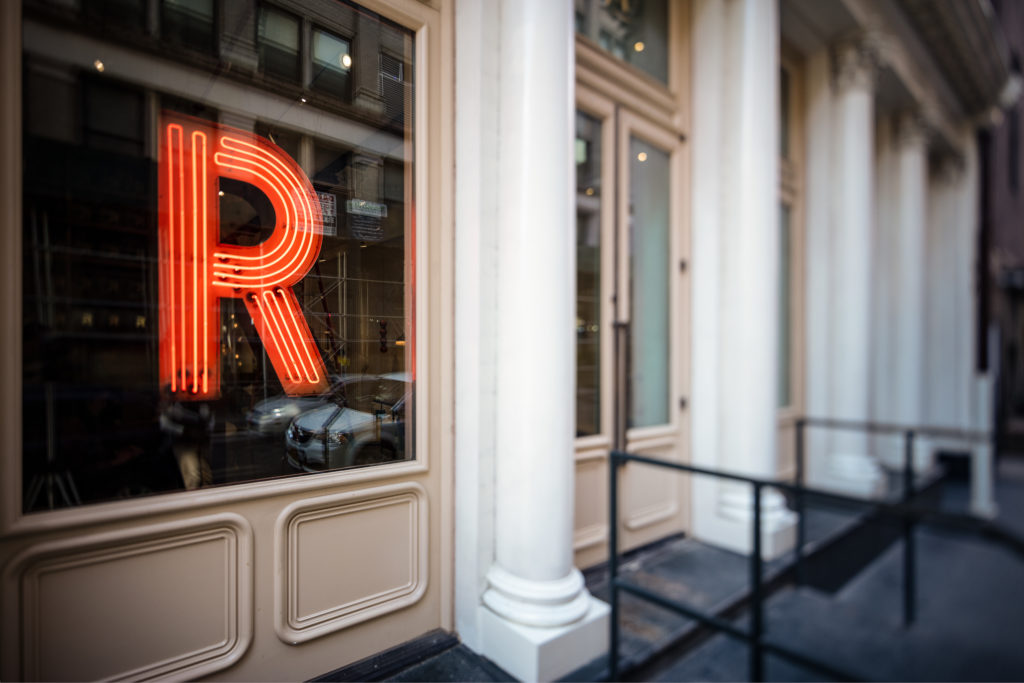
R & Company’s new storefront at 64 White Street in Tribeca, New York City.
AM: How else will you use the new space?
ES: One of the main purposes of the new space is to bridge the institutional and commercial aspects of the design world. We’ve moved our library into the new venue and have hired a full-time archivist. Researchers, curators, students, and enthusiasts are now able to make appointments to see rare books. We will also be hosting talks, film screenings, and other design history events. One of our biggest goals is to affect the way people see and talk about design, to consider the work on a higher level. r-and-company.com.


